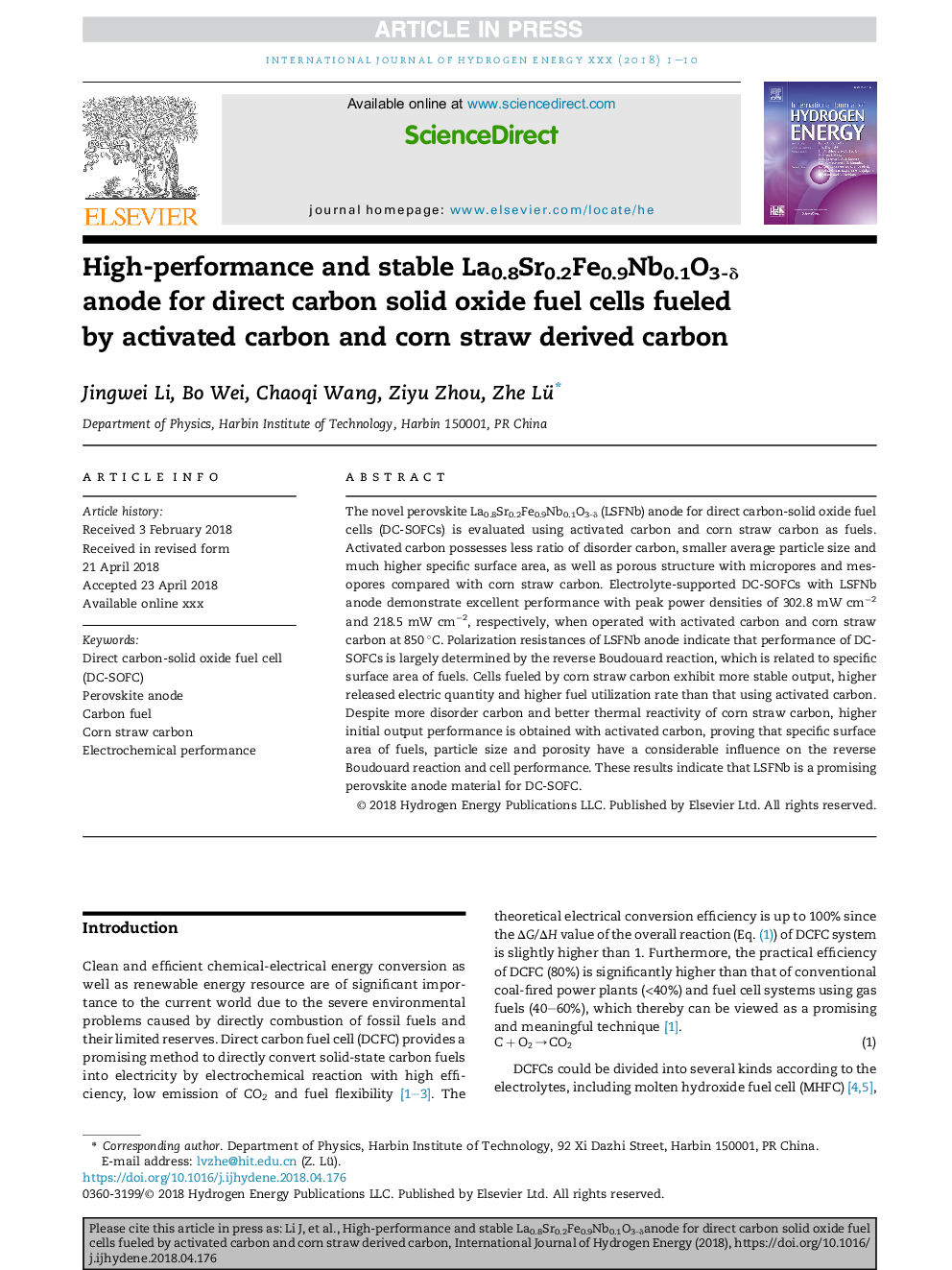| Article ID | Journal | Published Year | Pages | File Type |
|---|---|---|---|---|
| 7705631 | International Journal of Hydrogen Energy | 2018 | 10 Pages |
Abstract
The novel perovskite La0.8Sr0.2Fe0.9Nb0.1O3-δ (LSFNb) anode for direct carbon-solid oxide fuel cells (DC-SOFCs) is evaluated using activated carbon and corn straw carbon as fuels. Activated carbon possesses less ratio of disorder carbon, smaller average particle size and much higher specific surface area, as well as porous structure with micropores and mesopores compared with corn straw carbon. Electrolyte-supported DC-SOFCs with LSFNb anode demonstrate excellent performance with peak power densities of 302.8 mW cmâ2 and 218.5 mW cmâ2, respectively, when operated with activated carbon and corn straw carbon at 850 °C. Polarization resistances of LSFNb anode indicate that performance of DC-SOFCs is largely determined by the reverse Boudouard reaction, which is related to specific surface area of fuels. Cells fueled by corn straw carbon exhibit more stable output, higher released electric quantity and higher fuel utilization rate than that using activated carbon. Despite more disorder carbon and better thermal reactivity of corn straw carbon, higher initial output performance is obtained with activated carbon, proving that specific surface area of fuels, particle size and porosity have a considerable influence on the reverse Boudouard reaction and cell performance. These results indicate that LSFNb is a promising perovskite anode material for DC-SOFC.
Related Topics
Physical Sciences and Engineering
Chemistry
Electrochemistry
Authors
Jingwei Li, Bo Wei, Chaoqi Wang, Ziyu Zhou, Zhe Lü,
